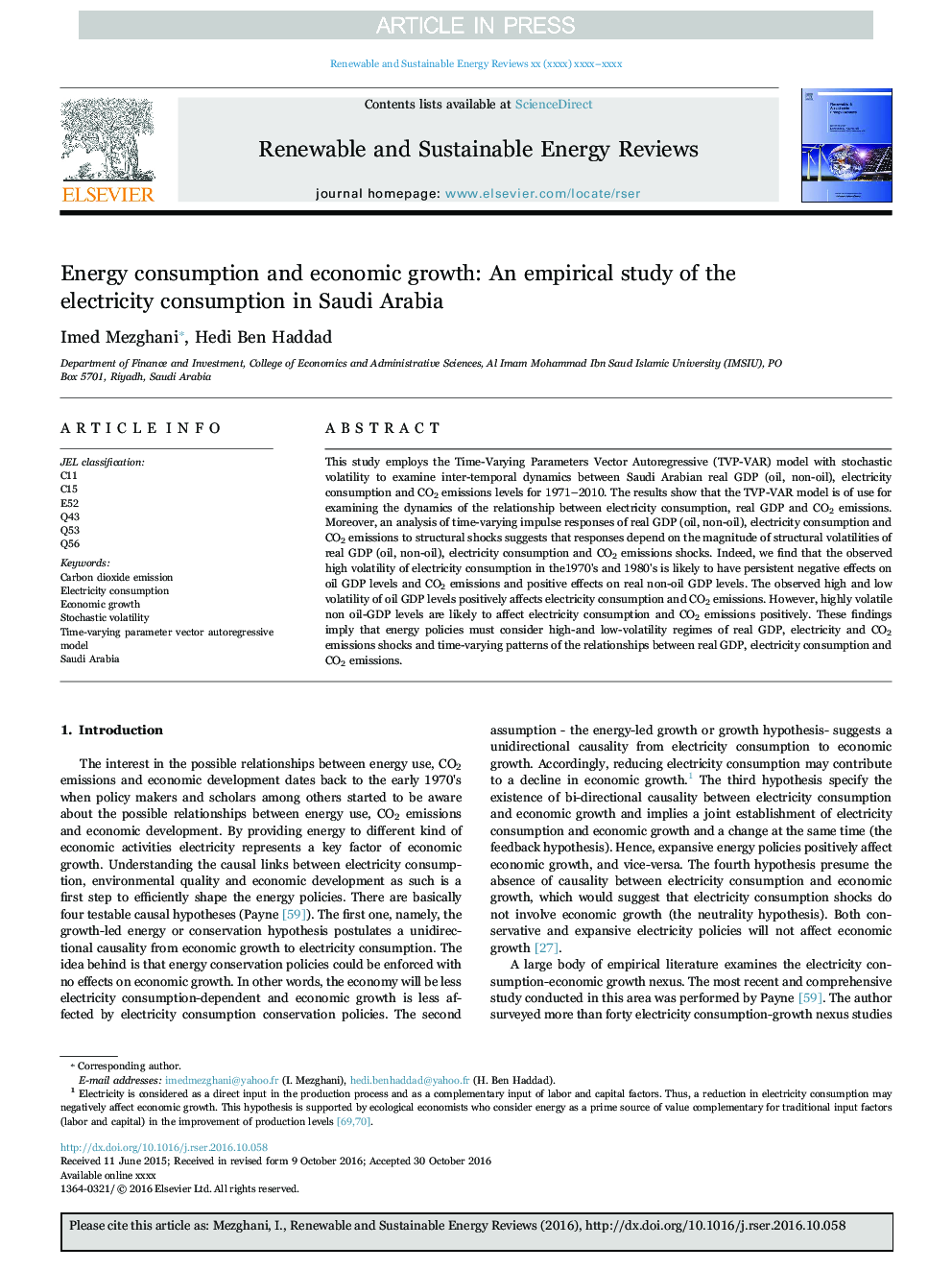| Article ID | Journal | Published Year | Pages | File Type |
|---|---|---|---|---|
| 5482828 | Renewable and Sustainable Energy Reviews | 2017 | 12 Pages |
Abstract
This study employs the Time-Varying Parameters Vector Autoregressive (TVP-VAR) model with stochastic volatility to examine inter-temporal dynamics between Saudi Arabian real GDP (oil, non-oil), electricity consumption and CO2 emissions levels for 1971-2010. The results show that the TVP-VAR model is of use for examining the dynamics of the relationship between electricity consumption, real GDP and CO2 emissions. Moreover, an analysis of time-varying impulse responses of real GDP (oil, non-oil), electricity consumption and CO2 emissions to structural shocks suggests that responses depend on the magnitude of structural volatilities of real GDP (oil, non-oil), electricity consumption and CO2 emissions shocks. Indeed, we find that the observed high volatility of electricity consumption in the1970's and 1980's is likely to have persistent negative effects on oil GDP levels and CO2 emissions and positive effects on real non-oil GDP levels. The observed high and low volatility of oil GDP levels positively affects electricity consumption and CO2 emissions. However, highly volatile non oil-GDP levels are likely to affect electricity consumption and CO2 emissions positively. These findings imply that energy policies must consider high-and low-volatility regimes of real GDP, electricity and CO2 emissions shocks and time-varying patterns of the relationships between real GDP, electricity consumption and CO2 emissions.
Keywords
Related Topics
Physical Sciences and Engineering
Energy
Renewable Energy, Sustainability and the Environment
Authors
Imed Mezghani, Hedi Ben Haddad,
